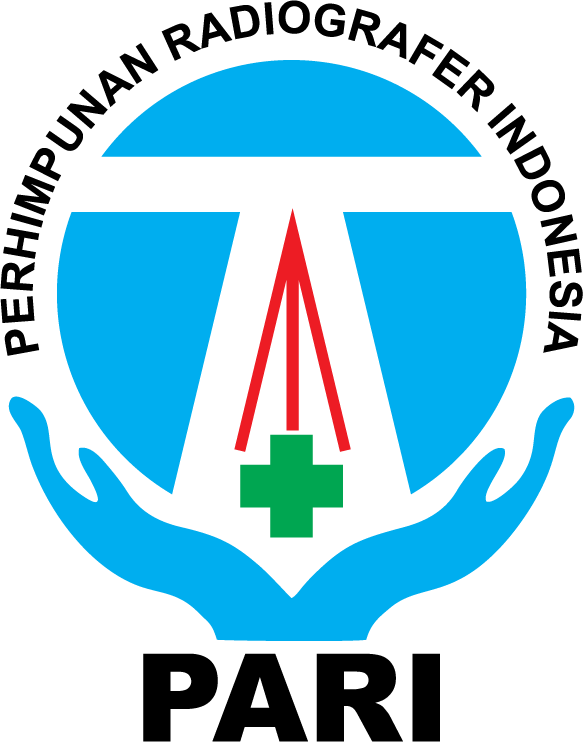PENGEMBANGAN METODE KUADRAN UNTUK PENENTUAN KEDALAMAN BENDA ASING DENGAN MENGGUNAKAN MODALITAS KOMPUTER RADIOGRAFI
Abstract
Background: The existence of a foreign object in the body generally can interfere with the metabolism of the body, so it can be life-threatening. Therefore it is necessary to take medical action in the form of surgery as soon as possible and precisely with x-ray examination as the guiding. With the development of the use of CR modalities, the method of determining foreign objects with the tools in the CR is considered, which is then called the quadrant method. And this study aims to explain the procedure and then the results are compared with the triangulation method which is a method of determining the depth of foreign objects previously used.
Methods: The type of research carried out is exploratory description research with an experimental approach. Where the radiograph was made in cases of foreign objects with 2 methods, namely the triangulation method and quadrant method using CR. First made phantom organ femur, humerus, and thorax in which a foreign object is placed in it. The position of a foreign object is actually measured first and then the results of measuring the depth of a foreign object using the quadrant and triangulation method are compared with the results of the measurement of the actual foreign object.
Results: The results showed that the making of radiographs with quadrant methods as well as triangulation methods both used 2 exposures with an x-ray so that the radiation exposure factor obtained by patients in both methods was not much different. Whereas from the comparison of the results of the measurements of the two methods it was found that the triangulation method was better than the quadrant method with smaller measurement differences when compared with the actual measurement of foreign objects. This is because the triangulation method has displayed measurement results based on a formula that uses mathematical calculations by calculating the distance and magnification of objects. And this is not obtained in the quadrant method where measurements are based on the data presented on the CR monitor screen without calculating the distance and magnification of the object first.
Conclusion: Radiographic examination procedure determines the depth of foreign matter quadrant method using a computer Radiography is carried out with two projections namely anteroposterior and lateral. While the difference in the depth of the foreign body quadrant method with the depth of the foreign body is actually found that the accuracy of the measurements carried out by the triangulation method is better than the measurements carried out by the quadrant methodKeywords
Full Text:
PDFReferences
Artawijaya,I Gusti Ngurah Agung, 2008. Proses terjadi sinar-X..wordpress.com. diakses tanggal 10 Februari 2011. Jam 12.30 WIB.
Akhadi, Mukhlis, 2000. Dasar-Dasar Proteksi Radiasi. Jakarta: Rineka Cipta.
Ballinger, Philip W. Merrill’s Atlas of Radiographic Positioning and Related Anatomy Ninth Edition. St. Louis : Mosby, 1999
Bar.ray, 2010. Personal Radiation Protection. sh_genx.gif. diakses tanggal 26 Maret 2011. Jam 11.00.
Endranatha, Damianus, Desain Aplikasi Software Alat Bantu Pengukuran Kedalaman Benda Asing Berbasis Visual Basic 2010, Poltekkes Kemenkes Semarang, 2012
DOI: https://doi.org/10.31983/jimed.v5i2.4463
Article Metrics
Refbacks
- There are currently no refbacks.
JURNAL IMEJING DIAGNOSTIK by http://ejournal.poltekkes-smg.ac.id/ojs/index.php/jimed is licensed under a Creative Commons Attribution-ShareAlike 4.0 International License.

.png)
.png)
.png)
.png)
.png)
.png)
.png)











